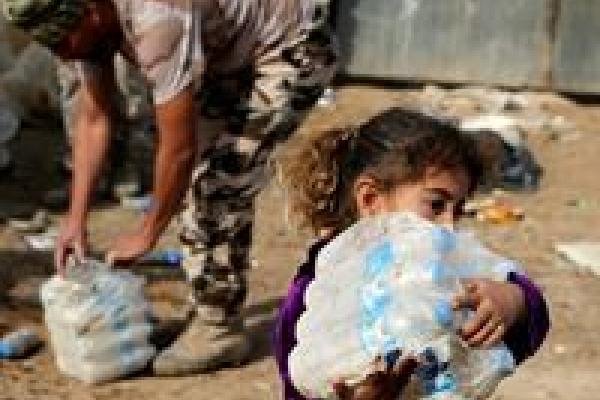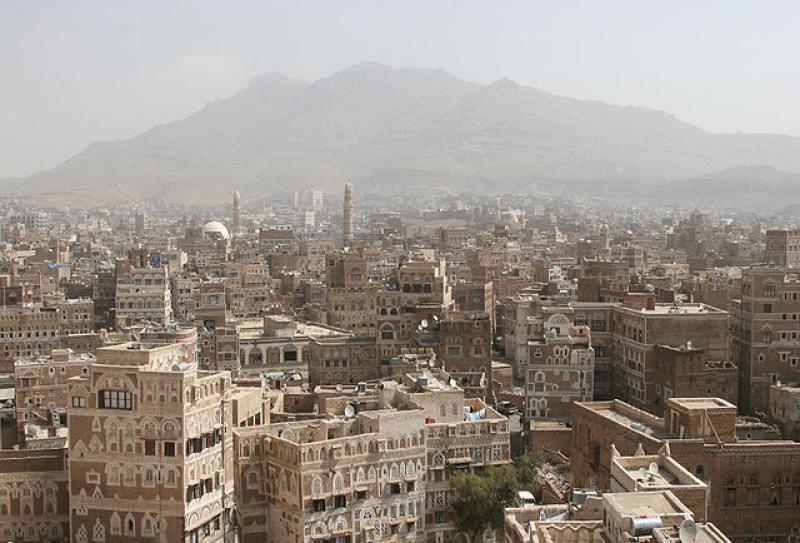Saudi Blockade, Impact on Food and Water Insecurity in Yemen

by Gabriel Giddens, MESC Academic Intern
After consulting with Yemeni authorities in December 2015, the United Nations Security Council (UNSC) issued a statement warning the international community that Yemen is approaching a catastrophic level of food insecurity [1]. According to United Nations data, approximately 58% of the country is starving [2]. While food and water security have long been an issue in Yemen, the rate of starvation has been accelerated by the conflict in Yemen and the blockade imposed by Saudi Arabia in March 2015 [3][4]. As the conflict proceeds, the prospect of relieving the humanitarian crisis appears elusive.
Yemen has struggled with food and water security for decades. In the early 2000’s, Yemen and the United Nations Development Programme established Millennium Development Goals that were largely centered on improving access to food and water. However, the ability of Yemen to meet these goals has been complicated by the fact that less than 4% of the country is arable land, an even smaller percentage of which is actually used for agriculture, and there are few considerable water sources [5][6]. Moreover, Yemen lacks the local-level organization to distribute food and other aid [7]. For these reasons, Yemen will require food and water provisions from other states and international organizations to reverse the insecurity.
In the midst of the already dire situation, the Saudi blockade specifically has cut off access to the source of 90% of Yemeni food [8]. Humanitarian organizations struggling to gain access to the country with some success, but it remains difficult to observe any substantial results. The World Food Programme, for instance, has successfully delivered food to the Taiz governorate. Yet, the organization has been unable to obtain permission from relevant authorities in Yemen to accelerate food deliveries and establish delivery points for sustainable relief. Moreover, the blockade remains in place as of March 2016.

Image of Sana'a, Yemen's Capital, by Ferdinand Reus, Wikimedia Commons, CC 2.0
Even if the blockade was removed, there is still a lack of commitment by all parties in Yemen to facilitate humanitarian aid. Last Wednesday, Jamie McGoldrick, the top United Nations humanitarian official in Yemen, said that no parties are making an effort to support civilian populations [9]. With that being said, it is likely that adequate remediation of food insecurity, and the broader humanitarian crisis, can only be pursued after the conflict is resolved.
The Saudi blockade is part of a campaign by Arab states, led by Saudi Arabia, to oust the Houthi occupiers in Yemen. The stated goal of the coalition is to resolve the political instability and re-install President Hadi. In reality, the involvement of Sunni Arab states is likely motivated, first and foremost, by Iran’s role in Yemen. Since the Houthis began its insurgency in 2004, Iran has funneled money and weapons to the Houthi’s presumably in an effort to posture against Sunni states [10].
Saudi Arabia has recently begun scaling back major operations and transitioning to a strategy of training and air strikes. They claim they are trying to increase the security situation to address the humanitarian issues and work towards unification [11]. This is likely superficial, however. An expansion of Iranian, Shi’i, influence is not an outcome that Saudi Arabia is likely to permit. Likewise, Iran will not likely renege and allow the government of Yemen, which is Sunni, to take power. For these reasons, reconciliation between the Yemeni government and the Houthi’s, as well as other separatists, is not likely to occur in the near future.
The bottom line is that the food and water supply of the Yemeni population is directly tied to a sectarian conflict that will not likely be resolved for years to come. Starvation is a side of war which isn’t often reported or recorded in history to the degree that it impacts a war-torn area, especially because non-combatants are largely the ones affected.
Sources:
- http://www.un.org/press/en/2015/sc12184.doc.htm
- http://data.un.org/CountryProfile.aspx?crName=Yemen
- http://www.theguardian.com/world/2015/jun/05/saudi-led-naval-blockade-worsens-yemen-humanitarian-disaster
- http://www.un.org/apps/news/story.asp?NewsID=52923#.Vuu1VRIrLwc
- http://www.theguardian.com/global-development-professionals-network/2015/apr/02/water-scarcity-yemen-conflict
- https://www.cia.gov/library/publications/the-world-factbook/fields/2097.html
- http://www.ye.undp.org/content/yemen/en/home/library/mdg/yemen---national-millennium-development-goals-report-.html
- http://www.salon.com/2016/01/29/a_forgotten_crisis_mass_starvation_in_yemen_as_u_s_backed_saudi_war_blockade_push_millions_to_brink_of_famine/
- http://bigstory.ap.org/article/7b65ab53aa68409887169f8bf3e7933b/un-says-none-yemens-warring-parties-protect-civilians
- http://www.usatoday.com/story/news/world/2015/04/20/iran-support-for-yemen-houthis-goes-back-years/26095101/
- http://www.theguardian.com/world/2016/mar/17/saudi-arabia-scale-back-yemen-attacks-sanaa-airstrikes-toll-houthi-market-rises
